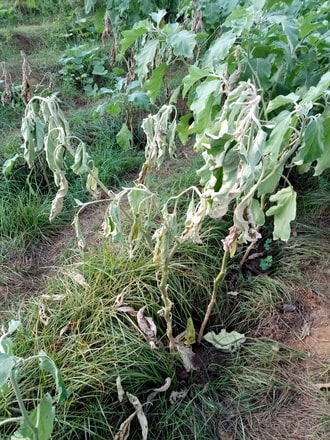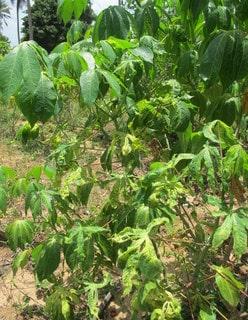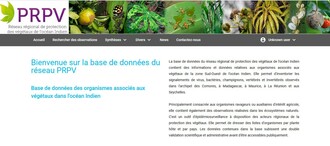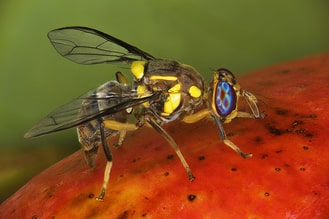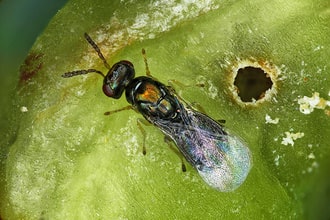PRPV network & EPIBIO project
Last update: 12 July 2023
Since 2003, the Regional Plant Protection Programme is a network focusing on plant health that brings together 25 partner institutions in the five IOC member countries (Reunion, Madagascar, Mauritius, Comoros, Seychelles). Its main objective is to strengthen regional epidemiosurveillance of diseases and pests in agrosystems and their control by proposing biocontrol solutions.
In 2022, the Biocontôle-OI research and training partnership (dP) was created, bringing together 11 regional partners. This new initiative will 1/ develop innovative biocontrol solutions (by studying multitrophic interactions for biological control, chemical ecology for biotechnical control and push-pull strategies, and evaluating natural biocides and defence stimulators), and 2/ integrate these biocontrol innovations into technical processes in the field and evaluate their performance.
The specific objectives of the EPIBIO project (2015 - 2021) are to better understand invasive species and their biology (cycles, behaviour and host plants), to develop eco-friendly means of control and monitoring, and to assess the risks of introducing new species. Country specific regulations are also addressed. In addition, EPIBIO is particularly committed to raising awareness and informing local populations about plant threats.
Monitoring pests...
In general terms, the aim is to improve and strengthen surveillance, prevention and response capacities through a better knowledge (genetic and biological diversity) of pests and vectors and a good understanding of pest population dynamics (biological cycles in relation to their environments, determinants responsible for proliferation, etc.) and diseases (epidemiology, virology).
In advance, regional and national partners are made aware of good practices on various points such as risk knowledge, early detection of agents for which the health risk is high and the importance of coordinated work that mobilizes pre-existing and already active surveillance networks...a framework that ensures effective management and response in the event of crises.
Several major harmful organisms (bioaggressors, viruses and bacteria, their vectors, fungi, etc.), particularly due to the extent of the socio-economic risks they represent on major crops, are examined. The project is more precisely interested in the complex of Ralstonia solanacearum species responsible for the bacterial wilt of Solanaceae, particularly in potatoes in Madagascar, whose socio-economic consequences are very serious for small farmers, directly impacting the production but also the spread of healthy tubers. The collection and typing of Ralstonia solanacearum species complex strains in as yet unexplored areas of Madagascar are currently being carried out and complete the knowledge on this complex in order to establish links with strains identified in the other islands of the south-western Indian Ocean (Réunion, Mauritius/Rodrigues, Comoros and Seychelles).
The project also works on fruit flies (Tephritidae) which affect many fruit and food crops in the area; on the varroa present in Madagascar, Mauritius and Réunion Island which threats the native bee (Apis mellifera unicolor); to the bacterial disease HLB or greening of citrus fruits and its vector which are the spyllids; to the vanilla mosaic virus (CymMV) detected in 1990 and which impacts the vanilla plantations of the north of Madagascar; to the main pests and viral diseases of cassava (including CBSD whose invasion has been confirmed in Comoros in 2017); to xanthomonas present on many crops (fruits, food crops) and to the copper resistances observed; to the deadly yellowing of coconut.
Updating and building on decision-support tools...
The database of the PRPV network lists the occurrence of all harmful organisms (arthropods, fungi, viruses, bacteria) observed in the zone up to now; the ambition today is to continue its enrichment as well as the scientific validation of the listed data and to systematically obtain an administrative validation by the National Directions of Plant Protection.
At the same time, the corresponding collections are continuously enriched. Beforehand, a morphological taxonomic identification of specimens collected and permanently stored at the Pôle de Protection des Plantes (3P) is carried out. This identification is also coupled with barcoding (identification by sequencing of a portion of a gene of the collected organisms) which brings complementary and precise elements through the specific genetic fingerprint of each organism thus referenced. The idea is to develop, in the long term, a portal that would make it possible to identify most of these pests and beneficials thanks to their genetic fingerprint and/or a photo.
In order to support the networks in their work and to share information on a large scale, the idea is also to rely on digital tools, of different natures.
The Pl@ntNet application, a collaborative tool for plant recognition based on photos, is very successful. It now covers a large part of the flora of Reunion and Mauritius and is currently being extended to the Comoros. This tool could support a reinforced biovigilance, in particular for regulated invasive species, an activity planned for a future project.
At the same time, the Di@gnoplant tool of the e-phytia platform, developed by the French Institute for Agronomic Research (INRAe), is a mobile, interactive and easy-to-use tool to help diagnose and advise on plant health. It has notably been extended to the Indian Ocean with the development of two modules that describe, for the region, the diseases and pests of tropical crops respectively of mango and citrus. The ambition today is to develop a common "exotic fruits" module (Tropifruit) similar to the existing tropical vegetables module (Tropilég).
In order to empower the actors involved in epidemiosurveillance in the zone, the ambition would be to couple the assets of Pl@ntNet to those of Di@gnoplant, by reporting for the first one the regulated invasive exotic plants and for the second one by alerting about the occurrence of diseases and pests in the zone, an activity planned for a future project.
Reflecting and developing methods of biological control...
The control of pests by their natural enemies or biological control is a sustainable and effective strategy for managing plant diseases. The project focuses in particular on the biological control of hemiptera (whiteflies, psyllids, scale insects...) or diptera (fruit flies) which are present on food and non-food crops of interest for the area.
The most problematic fruit fly species in the region is currently Bactrocera dorsalis, native to Southeast Asia. Since its first detection in Kenya in 2003, this species has rapidly spread to adjacent countries, including Comoros in 2005, Madagascar in 2010, Mauritius in 2015 and Reunion in 2017. The first studies carried out in several African countries in the zone (Comoros, Mauritius, Réunion) report significant damages to fruit production. This biological control work in the area has therefore started with the inventory of parasitoid species native to Comoros ("e-PRPV" project) and recently in Madagascar. Then in Comoros, a national request has been made for the introduction of a parasitoid (Fopius arisanus) on the island of Grande Comores. The objective was to ensure the biological regulation of B. dorsalis populations in order to limit damage on site and limit the risks of introduction into the only island still free of the disease in the zone, the Seychelles. The post-release evaluation of this parasitoid on the parasitism rate is currently being assessed in Comoros and is also continuing in Réunion Island.
The project is also interested in the biological control of other species of socio-economic interest for the area.
This is particularly the case of the pests of eucalyptus, a melliferous species and interesting for these essential oils, but also a source of wood energy in Madagascar. Its pests are present in Mauritius, Madagascar and Reunion Island. Well controlled by parasitoids in Reunion and Mauritius, this is not yet the case in Madagascar where not all parasitoids are present. Parallel to a follow-up of the damage on the three islands, a procedure notably for the introduction of Quadrastichus mendeli in Madagascar, according to the regulations in force, is in progress.
Finally, the project is also working to develop an innovative biocontrol strategy for bacterial wilt using bacteriophage.The Ralstonia solanacearum species complex is capable of infecting a wide range of hosts, including food crops such as tomato or eggplant. It is therefore important to find alternative means of control, already used in the food industry and already tested on different continents. Although specific, phages have an interesting potential to be explored and exploited in agriculture in the biological control of plant pathogenic bacteria. Given the great diversity of strains of interest, a preliminary study conducted in Mauritius has identified and characterized (genotyping and phenotyping, host range, pathogenicity) a number of species of these viruses, particularly in tomato greenhouses.
Last update: 12 July 2023



